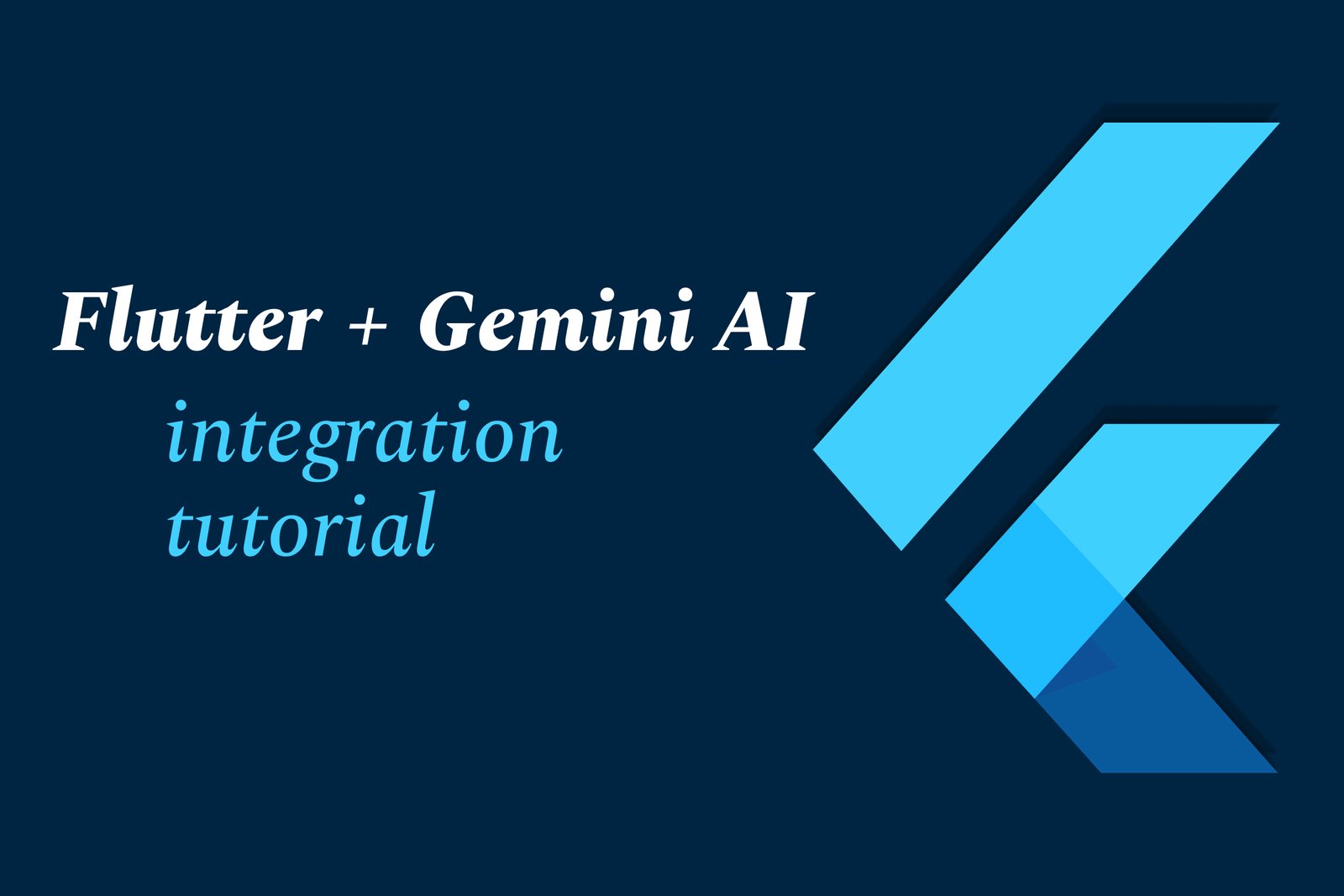Flutter + Gemini AI Integration Tutorial
The Flutter + Gemini AI integration tutorial guides developers to seamlessly combine Google’s Gemini large language models with Flutter apps, enabling AI-powered features like natural language understanding, real-time responses, and intelligent UI through easy SDK and API integration.
Flutter + Gemini AI integration tutorial
1 ) Introduction to Gemini AI in Flutter
Gemini AI is a cutting edge set of large language models (LLMs) from Google designed to enable intelligent app experiences.
Integrating Gemini AI with Flutter enables developers to build apps with natural language understanding and AI powered features.
This tutorial focuses on building a Flutter app that uses Gemini AI capabilities via Google's AI SDKs.
2 ) Building a Gemini powered Flutter App: The Colorist Example
Colorist is an interactive Flutter app example demonstrated in the tutorial.
It accepts natural language color descriptions (e.g., “deep ocean blue”) from users.
The app uses Gemini API to:
Convert descriptions into precise RGB color values.
Display the interpreted color in real time.
Show technical color information and context.
Keep a history of generated colors.
Features a split interface showing a chat system and detailed logs of low level LLM interactions for deeper understanding.
3 ) Key Learning Outcomes
How to configure Firebase AI Logic for Flutter.
Crafting effective system prompts to guide AI behavior.
Declaring functions that map natural language commands to app features.
Handling streaming AI responses for responsive UI.
Synchronizing app UI state with AI conversation context.
Managing AI conversation state using Riverpod state management.
Implementing robust error handling in AI powered apps.
4 ) Getting Started with Flutter Gemini SDK
Obtain a Gemini API key from Google AI Studio to authenticate requests.
Initialize the Gemini SDK in Flutter’s main function with the API key.
Use `Gemini.instance` to send prompts and receive AI generated content.
Supports multiple request types including text, file uploads, and inline data.
5 ) Core SDK Features and Usage
`prompt`: Send a text or multipart request and receive a single asynchronous AI response.
`promptStream`: For receiving streaming responses, enabling real time interaction updates.
Multi turn conversations are supported, allowing context aware AI chats.
Supports different content parts like `Part.text` and `Part.inline` for flexible input types.
6 ) Using the Gemini API in Flutter
Construct requests using `Part` objects containing the data to send.
Listen to the stream or await future responses depending on the method used.
Easily implement chat like interfaces with multi turn message arrays.
Control generation parameters and safety settings for AI output.
7 ) Building AI Experiences with Flutter
The Flutter AI Toolkit simplifies adding features such as chat, speech to text input, and streaming AI responses.
Integration with Firebase AI Logic or direct Gemini API usage provides flexible deployment options (client side or server side).
Developers focus on app flow and UX while the SDK manages the complexity of AI interactions.
8 ) Community and Resources
Official documentation and tutorials are provided to help learn Flutter + Gemini AI integration.
FlutterFlow community tutorials also show how to integrate Gemini AI using REST APIs.
Packages like `flutter_gemini` ease SDK integration with Dart and Flutter.
Summary
This tutorial guides Flutter developers through leveraging Google's Gemini AI to build sophisticated, AI driven apps. Developers learn to configure and use the Flutter Gemini SDK, handle multi turn conversations, process streaming AI responses, and synchronize AI with app state, enabling rich user experiences powered by cutting edge language models.
https://justacademy.in/news-detail/ai-in-flutter:-smarter-ux-and-features
https://justacademy.in/news-detail/what’s-deprecated-in-flutter-2025
https://justacademy.in/news-detail/new-material-3-support-in-flutter-ui-toolkit
https://justacademy.in/news-detail/flutter-beta-features-worth-exploring
https://justacademy.in/news-detail/flutter-for-startups:-quick-mvp-building-guide
Related Posts
In 2025, top Angular libraries offer modern, feature-rich components and tools for building dynamic web apps. From powerful data grids to low-code platforms like UI Bakery, these libraries enhance development speed, UI design, and scalability, making them essential for Angular developers.
Migrating from AngularJS to Angular 17 involves gradually upgrading your app by running both frameworks together using tools like ngUpgrade, rewriting components in TypeScript, and adopting Angular’s modern architecture to enhance performance, maintainability, and long-term support.
Angular state management tools help organize and handle app data efficiently, improving scalability and maintainability. Popular options include NgRx for robust, RxJS-based patterns, and newer Signal Store solutions that offer simpler, reactive approaches integrated tightly with Angular’s latest features.
RxJS in Angular empowers developers to manage asynchronous data streams with powerful operators like `forkJoin`, `combineLatest`, and `zip`. Mastering these key operators in 2025 is essential for building efficient, reactive applications that handle complex event sequences seamlessly.
Angular performance optimization in 2025 focuses on improving app speed and responsiveness by using techniques like OnPush change detection, lazy loading, efficient data caching, and AOT compilation. These practices reduce load times, enhance user experience, and ensure scalable, fast Angular applications.
In 2025, Angular remains preferred for large-scale, enterprise apps with its robust, all-in-one framework, while Vue attracts developers seeking simplicity and fast development for smaller projects. Both frameworks excel, with choice driven by project needs and team expertise.
Angular Signals are a new reactive primitive in Angular 16 that enable fine-grained, efficient change detection by automatically tracking dependencies and updating only affected parts of the UI. They simplify state management and boost app performance, revolutionizing Angular's reactivity model.
Angular interview questions to prepare in 2025 focus on core concepts like components, directives, data binding, routing, and dependency injection, along with TypeScript mastery and latest Angular features to ensure strong practical knowledge for building scalable, efficient web applications.
AngularJS reached its official end of support in January 2022, meaning no further updates or security patches. To ensure app security and performance, developers should consider migrating to modern Angular versions or seek third-party long-term support options if immediate migration isn’t possible.
The Angular Roadmap 2025 highlights upcoming features focused on improving developer experience and performance, including zoneless Angular, Signals integration, enhanced Forms, async data handling, improved HMR, and expanded Angular Material/CDK enhancements, driving modern, efficient web app development.










